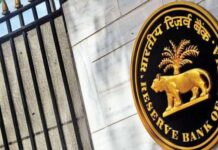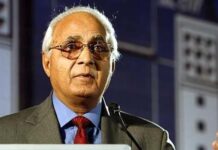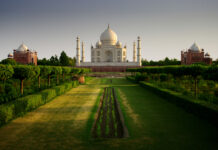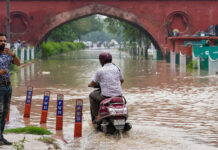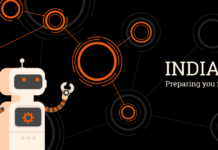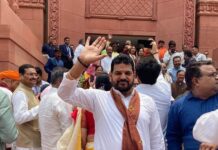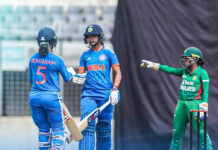“In this era, wars will not be fought over oil, as in the past, but over water” -Clive Cussler, Blue Gold.
“Some countries will completely run out of the water, igniting a global refugee crisis. Tens of millions of people will flood across international borders. It means the end of fisheries, environmental destruction, conflict, lower living standards.”
The situation discussed above is right here in India. Our country has been hit by drought, and except those who are dealing with it, nobody is even bothered enough.
The drought did not wait for the elections! It has existed for months, and it has been one of the most ignored realities of India.
The situation is becoming desperate. The country’s water is strained by population growth. There is no more freshwater on earth than it was there, two thousand years ago, when the population was three percent of its current size. Even without the inevitable droughts, like the current one, it will get worse as demand and pollution increase.
As people who deal with the biggest water bodies, you must see the irony. We are facing water shortage, living on the only planet whose surface is covered two-thirds with water.
No drinking water will be available by 2030
A recent report of NITI Aayog on groundwater level says that 21 Indian cities including Delhi, Bangaluru, Chennai and Hyderabad will run out of groundwater by 2020, affecting around 100 million people.
It also says that 40 per cent of India’s population will have no access to drinking water by 2030. The situation is alarming, given that we are just six months away from 2020! Three rivers, four water bodies, five wetlands and six forests have completely dried in Chennai, despite having better water resources and rains than any other metro cities.
One of the ominous predictions of climate change has been a failing monsoon season in India. For the last five years, the rainfall in the expanse has been below average, with 2015 being the worst at 86 per cent.
The two studies point out that India, along with China, France and the US, will be having no drinking water by 2040 if consumption of water continues at the current pace. Even a recent UN report on water conservation suggested acute water shortage in India. The report predicts that by 2025, nearly 3.4 billion people will be living in “water-scarce” countries, and the situation would become grim in the next 25 years. The report adds that due to its unique geographical position, India will face the brunt of the crisis and would be at the centre of this conflict.
Chennai out of water
Chennai is thirsty! It is facing a severe drought and has not been able to meet the demand of the citizens. Water shortage is at its peak after water reservoirs in the state ran dry. Yes, there are some news reports and anecdotal evidence. However, the actual magnitude of the drought is still not definite, and no concrete data is available to provide a complete understanding of this dreadful crisis.
In 2017 Chennai saw its worst drought in 140 years, but no lessons were learned from this incident. The negligible rainfall last year and no sign of rain in the coming days remain among the gravest issue for the city.
Chennai is expanding, the population is increasing, but since the last 100 years, the number of water reservoirs has remained the same. Per capita water consumption of Chennai is considerably lower in comparison with other cities; per capita, water consumption of Chennai is 107 litres per day, while in the other cities it is 140-270 litres.
Villages abandoned as drought forces thousands to abscond
Hundreds of Indian villages have been emptied as a historic drought has forced families to vacate their homes in search of water. Hatkarwadi village, about 20 miles from Beed in Maharashtra state, is almost completely abandoned. With 80% of regions in neighbouring Karnataka and 72% in Maharashtra were hit by drought and crop failure and 8 million farmers in these two states are struggling to survive.
According to the officials, this drought is worse than the 1972 famine that affected 25 million people across the state, and it began early in December.
The severe water shortage has caused a lot of damage, including complete damage to villagers’ agriculture-based livelihood. Crops have weakened and died and left behind cattle starving and with absolutely zero water to drink.
This year’s south-west monsoon, which is responsible for 80% of the country’s rainfall, is assumed to be delayed and is predicted to be lesser than normal. This means that there is no relief in sight for parched India.
What are the hurdles for fighting against climate change?
The number one reason is a ransom. Fossil Fuel companies realize one crucial nuance – the world is heavily dependent on fossil fuels, and these companies have held this knife to our throats ever since renewable energy has been propositioned as a viable alternative. They get insecure when ‘Green Energy’ is proposed as it means they’ll have to shut shop and the climate will start to heal. Big-Oil companies have squashed any meaningful research and government interest with the help of their old reliable ‘throw money at politicians’ tactic. A sustainable, renewable network of energy that steadily replaces fossil fuels completely is the way to go about this.


